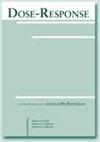Dose–Response Study of Caffeine on Postnatal Weight Gain in Premature Neonates—A Retrospective Cohort Study
IF 2.4
4区 医学
Q3 PHARMACOLOGY & PHARMACY
引用次数: 0
Abstract
BackgroundCaffeine citrate (CC)-induced excessive energy expenditure, diuresis, natriuresis, and other CC-associated potential side effects (CC-APSEs) result in lower daily weight gain (WG) in premature neonates. This study aimed to assess higher CC-doses’ effect on the mean daily-WG (MD-WG) and CC-APSE development, considering 5 mg/kg/day as the standard regimen.MethodThis retrospective cohort study included neonates of ≤36 weeks gestational age and received CC-therapy. The same participants were followed for data analysis in two postnatal phases: 15–28 and 29–42 days of life (DOL). Based on daily CC-dose, formed group-I=(5 mg/kg/day), group-II=(>5–7 mg/kg/day), and group-III=(>7 mg/kg/day). Data was analyzed separately for group-II and group-III using group-I as the standard.ResultsThe study included 284 neonates. During phase-I, the MD-WG was significantly higher in group-I than group-II (19.9 ± .88 g/kg/d vs 17.5 ± .49, P = .031) and group-III (19.9 ± .88 g/kg/d vs 16.7 ± .71, P < .001). During 29–42 DOL, the MD-WG of group-I was only significantly higher than group-III (21.5 ± .42 g/kg/d vs 18.1 ± .39 g/kg/d, P = .003) and comparable with group-II. During 15–28 DOL, CC-APSEs were significantly higher in group-II and group-III but during 29–42 DOL was significant only in group-III.ConclusionExposure to higher caffeine doses in this study cohort is associated with lower postnatal WG in preterm neonates than standard daily doses may be due to its catabolic effects and CC-APSEs.咖啡因对早产新生儿产后体重增加的剂量-反应研究--一项回顾性队列研究
背景枸橼酸咖啡因(CC)引起的能量消耗过多、利尿、利尿和其他CC相关潜在副作用(CC-APSEs)导致早产新生儿日增重(WG)降低。本研究以 5 毫克/千克/天作为标准方案,旨在评估更高的 CC 剂量对平均日增重(MD-WG)和 CC-APSE 发展的影响。在出生后的两个阶段对相同的参与者进行了数据分析:出生后 15-28 天和 29-42 天 (DOL)。根据每天的CC剂量,第一组=(5毫克/千克/天),第二组=(5-7毫克/千克/天),第三组=(7毫克/千克/天)。以第一组为标准,分别分析第二组和第三组的数据。在第一阶段,第一组的 MD-WG 明显高于第二组(19.9 ± .88 g/kg/d vs 17.5 ± .49,P = .031)和第三组(19.9 ± .88 g/kg/d vs 16.7 ± .71,P <.001)。在 29-42 DOL 期间,I 组的 MD-WG 仅显著高于 III 组(21.5 ± .42 g/kg/d vs 18.1 ± .39 g/kg/d,P = .003),与 II 组相当。在 15-28 DOL 期间,CC-APSEs 在 II 组和 III 组显著较高,但在 29-42 DOL 期间,只有 III 组显著较高。
本文章由计算机程序翻译,如有差异,请以英文原文为准。
求助全文
约1分钟内获得全文
求助全文
来源期刊

Dose-Response
PHARMACOLOGY & PHARMACY-RADIOLOGY, NUCLEAR MEDICINE & MEDICAL IMAGING
CiteScore
4.90
自引率
4.00%
发文量
140
审稿时长
>12 weeks
期刊介绍:
Dose-Response is an open access peer-reviewed online journal publishing original findings and commentaries on the occurrence of dose-response relationships across a broad range of disciplines. Particular interest focuses on experimental evidence providing mechanistic understanding of nonlinear dose-response relationships.
 求助内容:
求助内容: 应助结果提醒方式:
应助结果提醒方式:


